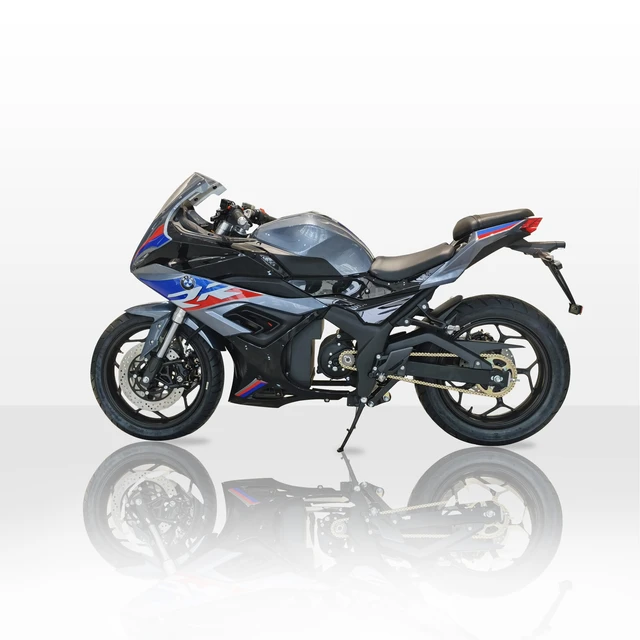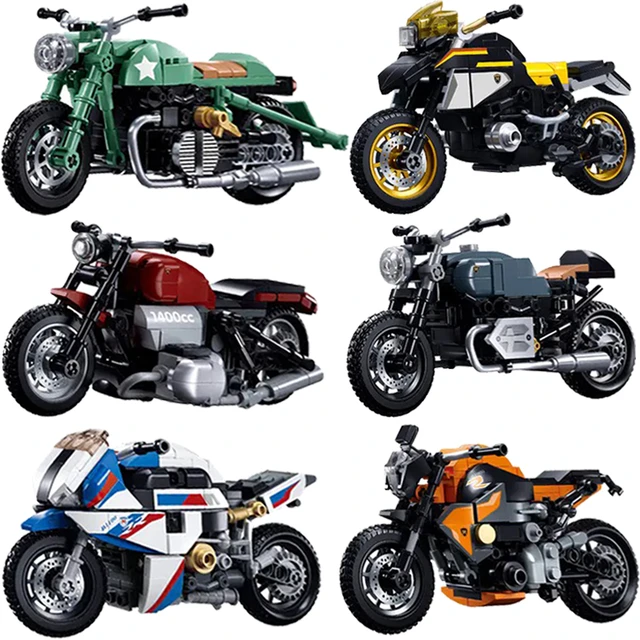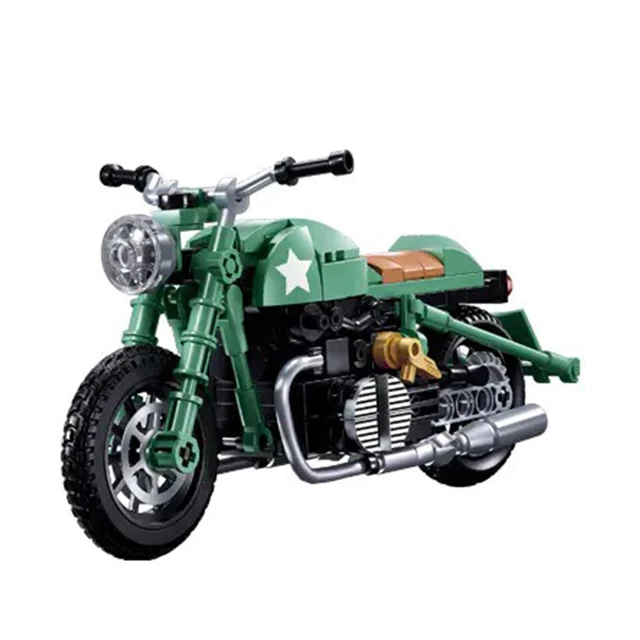BMW has a storied history of producing some of the most advanced and high-performance motorcycles in the world. Among them, a few models stand out as the fastest BMW motorcycle ever made. But what exactly makes these machines so quick? From cutting-edge engineering and top-tier components to advanced electronics and aerodynamic design, BMW has left no stone unturned. This detailed guide will explore the engineering marvels, performance capabilities, and unique features of BMW’s speed demons.
History of BMW Motorcycles
BMW Motorrad, the motorcycle brand of the German automaker BMW, has a rich heritage spanning over nine decades.
Early innovations
BMW’s motorcycle journey began in 1923 with the R32, which featured the now-iconic flat-twin boxer engine. This design laid the foundation for all BMW motorcycles that followed, emphasizing reliability and performance.
Racing pedigree
Over the years, BMW has not only manufactured road-going motorcycles but also competed in various motorsport events. Success in racing has allowed BMW to transfer technologies and innovations from the racetrack to their consumer models, culminating in some of the fastest BMW motorcycles.
Technological advancements
BMW has always pushed the envelope with technological advancements. From the introduction of ABS (Anti-Lock Braking System) in 1988 to the recent adoption of ride-by-wire systems, BMW continues to integrate cutting-edge technology into their motorcycles.
 The BMW S1000RR
The BMW S1000RR
The BMW S1000RR is widely regarded as one of the fastest production motorcycles in the world.
Engine and performance
At the heart of the S1000RR is a 999cc inline-four engine capable of producing a staggering 205 horsepower. This power enables the motorcycle to achieve a top speed of approximately 186 mph (299 km/h). The engine’s design includes lightweight components and a variable valve timing system, making it incredibly efficient and powerful.
Chassis and suspension
The S1000RR features an aluminum composite bridge frame for exceptional rigidity and lightness. The motorcycle also comes equipped with electronic suspension adjustment (ESA) that allows riders to adjust the suspension settings on the fly, ensuring optimal performance under various riding conditions.
Advanced electronics
BMW has endowed the S1000RR with a suite of advanced electronics, including Dynamic Traction Control (DTC), multiple riding modes, and a quick-shifter for clutchless gear changes. These technologies not only enhance performance but also provide a higher degree of safety and control.
The BMW HP4 Race
The HP4 Race is a limited-edition model designed specifically for track use and is considered one of the fastest BMW motorcycles ever made.
Carbon fiber construction
One of the standout features of the HP4 Race is its extensive use of carbon fiber. The frame, wheels, and bodywork are all crafted from this lightweight material, resulting in a motorcycle that weighs just 378 lbs (171 kg).
High-performance engine
The HP4 Race utilizes a highly tuned version of the S1000RR’s engine, but with enhancements that push the power output to 215 horsepower. This makes it capable of breaking the 190 mph (305 km/h) barrier, putting it in elite company among the fastest motorcycles globally.
Race-spec components
This motorcycle comes equipped with top-of-the-line components, including Öhlins suspension, Brembo brakes, and a titanium exhaust system. These high-spec elements contribute to its incredible performance and race-ready nature.
The BMW M1000RR
The M1000RR, often referred to as the M RR, represents BMW’s pinnacle in motorcycle performance, combining race-proven technology with street legality.
Engine and aerodynamics
The M1000RR features the same 999cc engine as the S1000RR but is tuned to produce even more power and torque. It also boasts aerodynamic winglets that generate downforce, improving high-speed stability and aiding in braking and cornering performance.
Handling and braking
Equipped with M-specific suspension settings and carbon fiber wheels, the M1000RR offers unparalleled handling characteristics. The braking system includes top-tier Brembo calipers, ensuring superior stopping power.
Electronics and connectivity
The M1000RR is equipped with the latest in electronic rider aids, including launch control, pit lane limiter, and customizable riding modes. Additionally, it features a large TFT display with smartphone connectivity, allowing riders to access navigation, calls, and music seamlessly.
Comparing the Fastest Models
While each of these motorcycles boasts incredible speeds, certain nuances set them apart.
Performance metrics
The S1000RR, HP4 Race, and M1000RR are all capable of exceeding 185 mph, but the HP4 Race and M1000RR push the boundaries slightly further. The HP4 Race’s weight and power make it more suited for track environments, while the M1000RR strikes a balance between track-focused performance and road usability.
User experience
The S1000RR is more accessible to everyday riders, offering comfort and practicality alongside its blistering speed. In contrast, the HP4 Race is an exclusive experience meant for the track, unavailable for daily road use. The M1000RR provides a middle ground, suitable for both high-performance track days and spirited road rides.
Price considerations
Price is another significant differentiator. The S1000RR is the most affordable of the three, making it the best entry point for those seeking a fast BMW motorcycle. The HP4 Race, given its limited production and high-end components, commands a significantly higher price. The M1000RR also sits at a premium but offers a more versatile package than the HP4 Race.
Advanced Features in Fast BMW Motorcycles
These motorcycles are packed with advanced features that enhance their performance and usability.
Ride modes
Multiple ride modes allow riders to tailor the motorcycle’s performance characteristics to their personal preferences or riding conditions. Modes such as Rain, Road, Dynamic, and Race adjust power delivery, traction control, and suspension settings to optimize the ride.
Quick-shifters
Quick-shifters enable clutchless upshifts and downshifts, allowing for smoother and faster gear changes. This technology is particularly beneficial during aggressive riding and track sessions, where every fraction of a second counts.
Traction and stability control
Advanced traction and stability control systems monitor wheel speed, lean angle, and throttle position to prevent wheel slip and loss of control. These systems are adjustable, providing the rider with options to enhance safety without sacrificing performance.
Data logging and connectivity
More recent models feature data logging capabilities, capturing telemetry data such as speed, throttle input, and lean angle. This information can be reviewed to improve riding skills or shared with others. Connectivity options enable integration with smartphones and riding apps for navigation, communication, and entertainment.
Customization and Aftermarket Options
The performance of these motorcycles can be further enhanced with customization and aftermarket parts.
Exhaust systems
Upgrading to a high-performance exhaust system can reduce weight and increase horsepower. Options from brands like Akrapovic and SC-Project are popular among BMW riders for their performance gains and refined sound.
Suspension upgrades
While stock suspension systems on BMW motorcycles are advanced, aftermarket options like Öhlins or WP can offer even greater adjustability and performance. Upgrading the suspension enhances handling and stability under various riding conditions.
Aerodynamics
Adding aftermarket aerodynamic parts such as winglets, windshields, and fairings can improve high-speed stability and reduce drag. These modifications can make the motorcycle more suitable for track use.
Ergonomics
Customizing the seat, handlebars, and footpegs can make the riding position more comfortable and better suited to individual preferences. This is particularly beneficial for long-distance riding or track days.
Safety Precautions for High-Speed Riding
Riding high-performance motorcycles necessitates strict adherence to safety practices.
Protective gear
Investing in quality protective gear is crucial. A full-face helmet, racing suit, gloves, and boots provide the necessary protection. Look for gear with advanced materials like Kevlar and reinforced stitching for added durability.
Track days
Participating in track days allows riders to experience their motorcycle’s full potential in a controlled environment. These events usually include professional instructors who can offer valuable tips on riding techniques and safety.
Regular maintenance
High-performance motorcycles require regular maintenance to stay in top condition. Adhering to the manufacturer’s maintenance schedule and using high-quality fluids and parts can prevent mechanical failures and ensure optimal performance.
Rider training
Advanced rider training courses are beneficial for mastering the capabilities of high-speed motorcycles. These programs typically cover advanced cornering techniques, braking, and throttle control, which are essential skills for safe and efficient riding.
Conclusion: Experiencing the Pinnacle of Speed
In the realm of high-performance motorcycles, BMW stands out with models like the S1000RR, HP4 Race, and M1000RR. Each of these machines represents the pinnacle of speed, engineering excellence, and technological advancement. From their powerful engines and advanced electronics to their lightweight construction and superior handling, these motorcycles offer a unique blend of performance and innovation. Understanding their features, performance metrics, and customization options can help you choose the right model for your needs. Whether you’re a track enthusiast or a road rider, experiencing the fastest BMW motorcycle is an unparalleled thrill.


